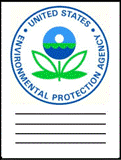U.S. Environmental Protection Agency
Document Type
Article
Date of this Version
6-1998
Abstract
Assessment of environmental condition is critical to wise management and policy decisions. However, for some concerns such as sustainability, it is difficult to assess environmental condition because it involves disparate social objectives and an understanding of complex ecological systems. Here, a general framework is proposed to examine sustainability of environmental resources in objective, measurable ways. By using soil quality as an example, sustainability research is taken beyond theory and into application.
Sustainability depends on the quality of resource endowment. Endowment of a natural resource can be modeled as an index of quality to assess the degree of sustainable management. This index, consisting of the most important identifying characteristics of the resource, is placed into a dynamic model of production to determine how resource use affects three different versions of sustainability. The economic, social, and environmental impacts are identified for each sustainability requirement, and the long-term path of resource quality is evaluated.
Soil quality was chosen as a natural resource because its importance is immediately obvious and because there is a wealth of data compared to other resources. Three general soil types—stable, neutral, and susceptible—were selected. The index of soil quality was used in a corn production setting to address three questions: (1) What are the impacts of different definitions of sustainability on the economy and the environment? (2) Do U.S. soil conservation policies address sustainability objectives? (3) How do substitution, reversibility, and uncertainty affect optimal soil use?
Results show that impacts, as well as the ability to meet sustainability goals, are highly dependent on soil type and on how sustainability is defined. In some cases, soil can be managed the same under any definition, but, in other cases, different sustainability concepts are at odds. In general, the deeper and better the soil, the more obvious and consistent was the approach to sustainability. Lower quality soil types require more complex approaches.
The results of this study can be used to help determine which soils need to be protected, identify tradeoffs between conservation and nitrate leaching as erosion occurs, show how risk and uncertainty affect soil conservation decisions, and provide other information helpful to policy makers dealing with soil management. Additionally, the methods used here can be useful to evaluate other, more complex natural resources such as forest health.


Comments
Hoag, D. L.; Popp, J. S. H.; Hyatt, D. E. (1998) Sustainability and resource assessment: a case study of soil resources in the United States. Research Triangle Park, NC: U.S. Environmental Protection Agency, Office of Research and Development; report no. EPA/600/R-98/038.